Engagement Guide for The Hula-Hoopin Queen
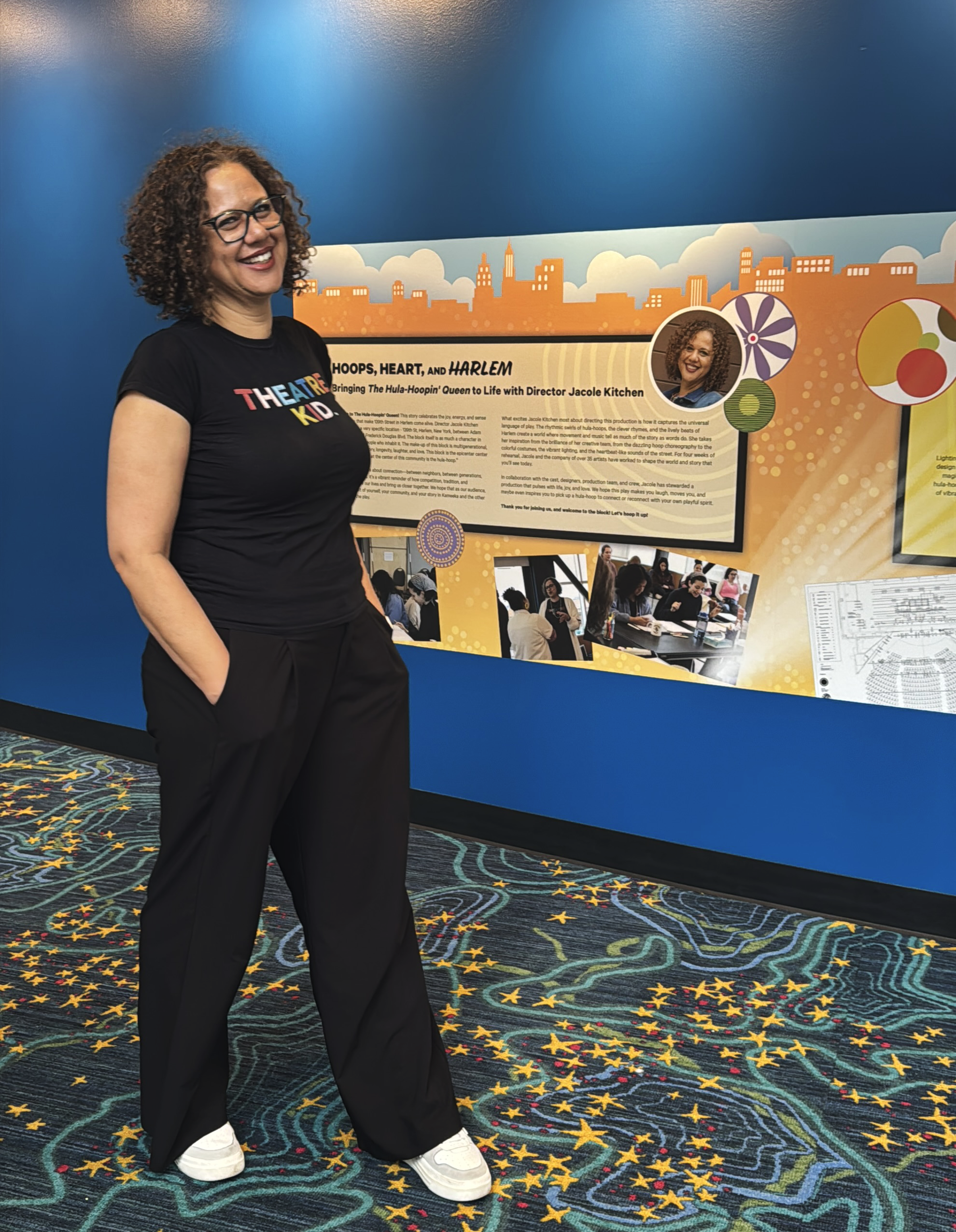
Hoops, Heart, and Harlem
Bringing The Hula-Hoopin' Queen to Life with Director Jacole Kitchen
Welcome to The Hula-Hoopin’ Queen! This story celebrates the joy, energy, and sense of community that make 139th Street in Harlem come alive. Director Jacole Kitchen says, "it is set in a very specific location - 139th St, Harlem, New York, between Adam Clayton Powell and Frederick Douglas Blvd. The block itself is as much a character in the play as are the people who inhabit it. The make-up of this block is multigenerational, family, friendship, history, longevity, laughter, and love. This block is the epicenter of the community, and at the center of this community is the hula-hoop."
At its heart, this play is about connection—between neighbors, between generations, and within ourselves. It's a vibrant reminder of how competition, tradition, and imagination shape our lives and bring us closer together. We hope that as our audience, you can see a bit of yourself, your community, and your story in Kameeka and the other characters in the play.
What excites Jacole Kitchen most about directing this production is how it captures the universal language of play. The rhythmic swirls of hula-hoops, the clever rhymes, and the lively beats of Harlem create a world where movement and music tell as much of the story as words do. She takes her inspiration from the brilliance of her creative team, from the dazzling hoop choreography to the colorful costumes, the vibrant lighting, and the heartbeat-like sounds of the street. For four weeks of rehearsal, Jacole and the company of over 35 artists have worked to shape the world and story that you'll see today.
In collaboration with the cast, designers, production team, and crew, Jacole has stewarded a production that pulses with life, joy, and love. We hope this play makes you laugh, moves you, and maybe even inspires you to pick up a hula-hoop to connect or reconnect with your own playful spirit.
Thank you for joining us, and welcome to the block! Let’s hoop it up!
Synopsis
The Hula-Hoopin' Queen is a vibrant and heartwarming stage adaptation of Thelma Lynne Godin’s beloved book, brought to life by playwright Gloria Bond Clunie. Set in Harlem, the story follows Kameeka, a determined young girl who dreams of being crowned the undisputed Hula-Hoopin’ Queen of 139th Street. But when she gets caught up in a fierce competition with her friends, she nearly forgets an important responsibility—helping prepare for her neighbor Miz Adeline’s birthday. What unfolds is a joyous celebration of friendship, community, and the intergenerational love that keeps traditions alive.
The production, filled with rhythm, movement, and humor, highlights the importance of perseverance and the special bonds between neighbors. Audiences of all ages will delight in the energy and heart of this fun-filled tale, which emphasizes the importance of family, respect, and having fun together.
Seattle Children’s Theatre’s production runs from February 12 to March 23, 2025, at the Charlotte Martin Theatre. The show is recommended for ages 5 and up and has an approximate runtime of 70 minutes with no intermission.
For those who want to experience the story before seeing it on stage, The Hula-Hoopin’ Queen is also available as a read-aloud video on Storyline Online, narrated by actress Oprah Winfrey. You can watch it here: Storyline Online - The Hula-Hoopin' Queen.
For tickets and additional details, visit Seattle Children's Theatre.
Conversation Starters
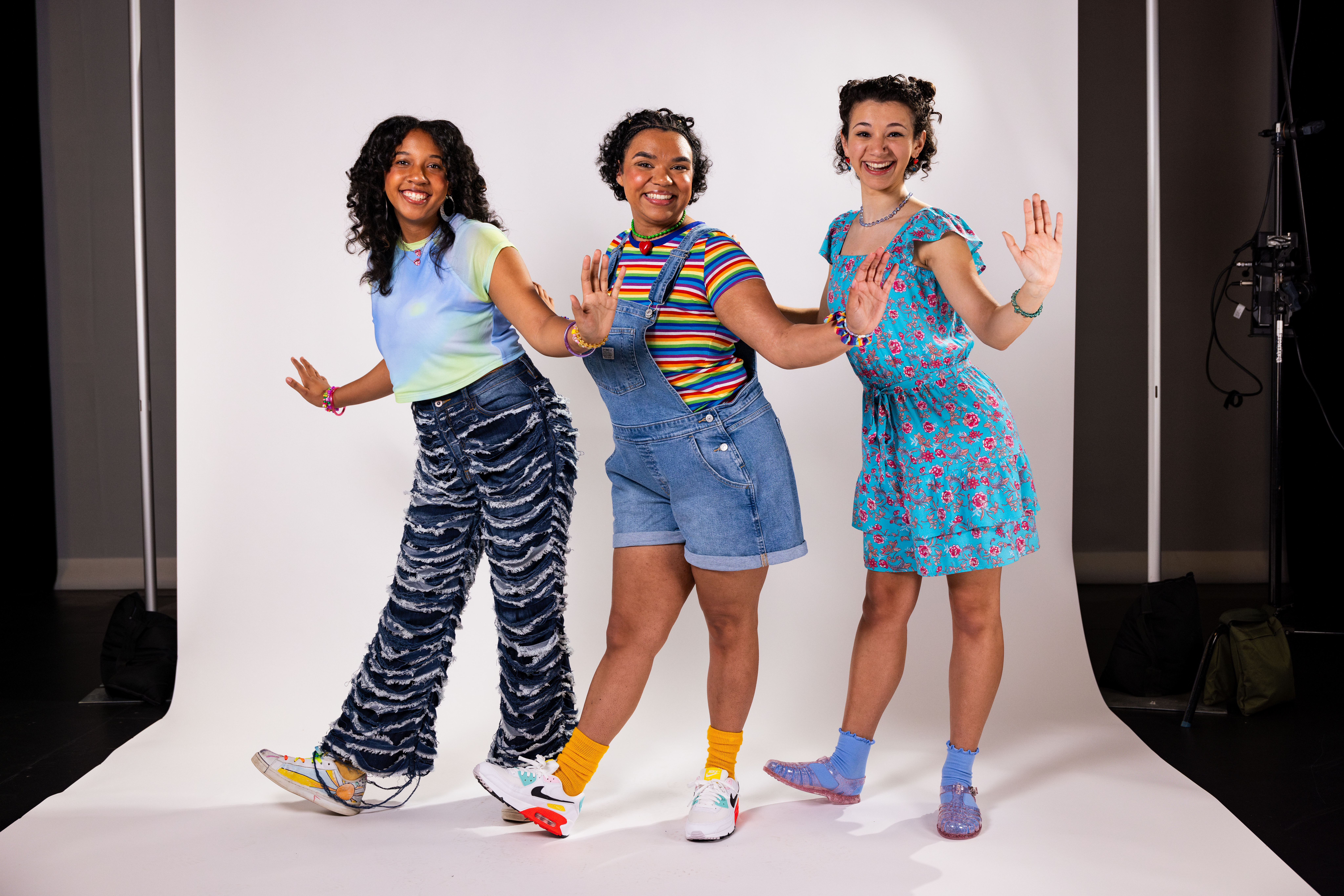
Extend the experience using these prompts!
- The characters in the play share a special bond, like family. Who in your feels like family, even if you're not related?
- Kameeka pushes herself to win the Hula-Hoopin' Crown. What's a time you set a big challenge for yourself?
- In The Hula-Hoopin' Queen, many traditions are celebrated. What special traditions do you or your family have? How do these traditions shape your identity?
Meet The Harlem Stars
In the play, The Hula Hoop Girls rhyme about the legendary artists, doctors, and activists who lived in Harlem during the Harlem Renaissance. The Harlem Renaissance, spanning the 1920s and early 1930s, was a period of immense creativity and cultural growth for African Americans. Centered in Harlem, New York, it brought together writers, musicians, artists, and performers to celebrate Black culture. Figures like Langston Hughes, Zora Neale Hurston, Duke Ellington, and Louis Armstrong shaped literature and jazz, while Broadway stars like Florence Mills and Bojangles Robinson made history. Beyond art, the movement fostered pride, confidence, and activism, influencing the Civil Rights Movement and leaving a lasting impact on American culture.
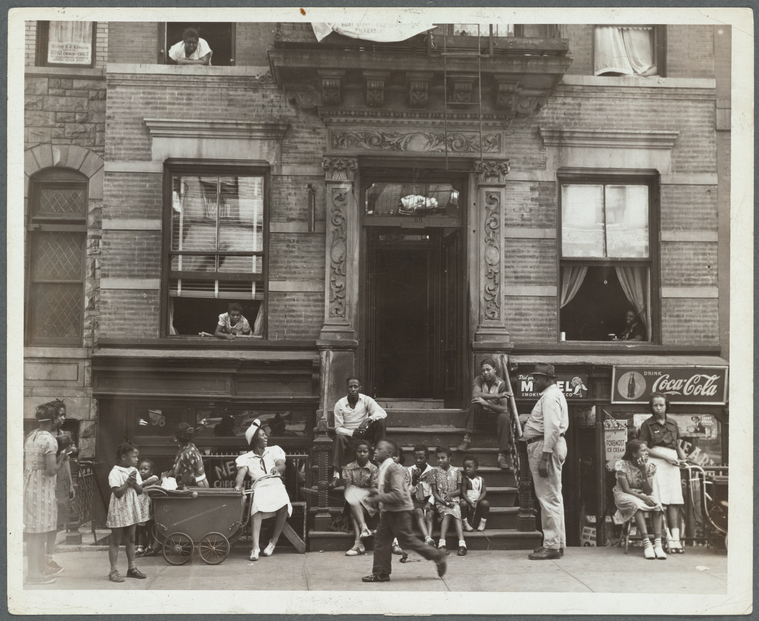
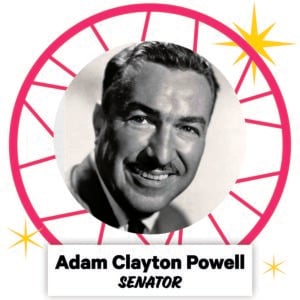
Adam Clayton Powell, Jr. was a leader who used his powerful voice to fight for justice and equality. He was born in 1908 and became the first Black congressman from the northeastern United States, representing Harlem, New York. Powell worked hard to create laws that improved education and helped those in poverty. As a preacher at Harlem’s Abyssinian Baptist Church, he became a passionate advocate for civil rights, speaking out against segregation and unfair treatment of Black people. Powell also worked on major laws to raise the minimum wage and support programs to help communities in need. His bold personality and strong opinions inspired many, but at times, his controversial actions caused him to lose support, and his political career came to an end. Still, his contributions to the Civil Rights Movement are remembered as groundbreaking.
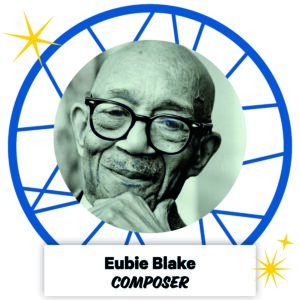 Eubie Blake was an influential composer and musician who helped shape early jazz and ragtime music. Born in 1883, Blake’s music became an important part of African American culture, especially during the Harlem Renaissance. One of his most famous achievements was co-writing “Shuffle Along” in 1921, the first successful Broadway musical with an all-Black cast. This show was a game-changer, bringing African American talent to the mainstream stage for the first time. Blake’s music blended ragtime with early jazz and became a huge influence on later musicians. Even as jazz became more popular in the 1920s, Blake continued to perform and write, and he worked with famous people like Noble Sissle. In his later years, Blake helped revive ragtime music in the 1970s, teaching others about its history. He lived to be 100, still performing and giving talks well into his 90s. His dedication to music and his love for sharing it with others made him a beloved figure in American music.
Eubie Blake was an influential composer and musician who helped shape early jazz and ragtime music. Born in 1883, Blake’s music became an important part of African American culture, especially during the Harlem Renaissance. One of his most famous achievements was co-writing “Shuffle Along” in 1921, the first successful Broadway musical with an all-Black cast. This show was a game-changer, bringing African American talent to the mainstream stage for the first time. Blake’s music blended ragtime with early jazz and became a huge influence on later musicians. Even as jazz became more popular in the 1920s, Blake continued to perform and write, and he worked with famous people like Noble Sissle. In his later years, Blake helped revive ragtime music in the 1970s, teaching others about its history. He lived to be 100, still performing and giving talks well into his 90s. His dedication to music and his love for sharing it with others made him a beloved figure in American music.
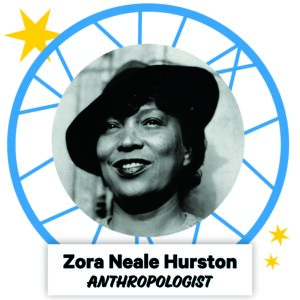 Zora Neale Hurston was a talented writer and anthropologist who celebrated Black life, especially the culture of the South. Born in 1891 in Alabama, Hurston grew up in Eatonville, Florida, one of the first all-Black towns in the U.S. She was curious about the world around her, and this led her to study anthropology at Barnard College, where she earned her degree. Hurston’s books, like Their Eyes Were Watching God, told stories of Black women and their experiences, breaking away from the usual narratives about African Americans. Her writing focused on the struggles, joys, and strengths of people living in the South. She also traveled to places like Haiti and Jamaica to learn about African cultural traditions. Though her work wasn’t widely celebrated in her lifetime, Hurston’s writing has since become essential to American literature. Her dedication to telling the stories of Black people has made her one of the most important writers of the 20th century.
Zora Neale Hurston was a talented writer and anthropologist who celebrated Black life, especially the culture of the South. Born in 1891 in Alabama, Hurston grew up in Eatonville, Florida, one of the first all-Black towns in the U.S. She was curious about the world around her, and this led her to study anthropology at Barnard College, where she earned her degree. Hurston’s books, like Their Eyes Were Watching God, told stories of Black women and their experiences, breaking away from the usual narratives about African Americans. Her writing focused on the struggles, joys, and strengths of people living in the South. She also traveled to places like Haiti and Jamaica to learn about African cultural traditions. Though her work wasn’t widely celebrated in her lifetime, Hurston’s writing has since become essential to American literature. Her dedication to telling the stories of Black people has made her one of the most important writers of the 20th century.
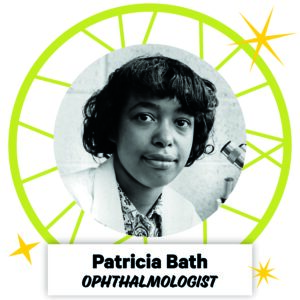 Patricia Bath was a groundbreaking doctor who invented a new way to treat cataracts, helping many people regain their sight. Born in 1942, Bath grew up in Harlem and always loved science. She was passionate about helping others, especially those in poor communities who didn’t have access to medical care. Bath was the first Black woman to complete a medical degree at Howard University, and she went on to become an expert in eye care. Through her research, Bath discovered that Black Americans were more likely to go blind, and she worked to create better access to eye care for those who needed it most. In 1988, Bath invented the Laserphaco Probe, a device that revolutionized cataract surgery. She was also the first Black woman to receive a medical patent. Bath’s work didn’t stop there; she co-founded the American Institute for the Prevention of Blindness to make sure that everyone, no matter their background, had the right to clear vision. Bath’s contributions to medicine changed the lives of thousands and paved the way for future generations of Black doctors.
Patricia Bath was a groundbreaking doctor who invented a new way to treat cataracts, helping many people regain their sight. Born in 1942, Bath grew up in Harlem and always loved science. She was passionate about helping others, especially those in poor communities who didn’t have access to medical care. Bath was the first Black woman to complete a medical degree at Howard University, and she went on to become an expert in eye care. Through her research, Bath discovered that Black Americans were more likely to go blind, and she worked to create better access to eye care for those who needed it most. In 1988, Bath invented the Laserphaco Probe, a device that revolutionized cataract surgery. She was also the first Black woman to receive a medical patent. Bath’s work didn’t stop there; she co-founded the American Institute for the Prevention of Blindness to make sure that everyone, no matter their background, had the right to clear vision. Bath’s contributions to medicine changed the lives of thousands and paved the way for future generations of Black doctors.
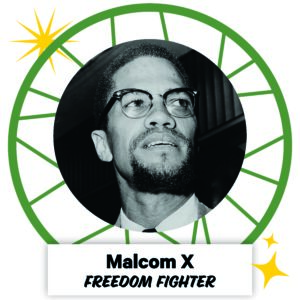 Malcolm X was a powerful and inspiring leader who spoke about Black pride and self-reliance. Born in 1925, he grew up facing many challenges, including the death of his father and the racism that existed in the United States. In his younger years, Malcolm was involved in a lot of trouble, but after being sent to prison, he found a new path in life. While in prison, he became a member of the Nation of Islam, a religious group that taught Black empowerment. As he became more involved, Malcolm X became known for his strong speeches and his ideas about Black independence. He argued that Black people should be proud of their heritage and fight for their rights, even if it meant using force. Although his views sometimes differed from those of other Civil Rights leaders like Martin Luther King Jr., his words inspired many young people to stand up for themselves. After leaving the Nation of Islam, Malcolm continued to speak out for justice, but tragically, he was assassinated in 1965. His life and ideas continue to inspire people to fight for equality.
Malcolm X was a powerful and inspiring leader who spoke about Black pride and self-reliance. Born in 1925, he grew up facing many challenges, including the death of his father and the racism that existed in the United States. In his younger years, Malcolm was involved in a lot of trouble, but after being sent to prison, he found a new path in life. While in prison, he became a member of the Nation of Islam, a religious group that taught Black empowerment. As he became more involved, Malcolm X became known for his strong speeches and his ideas about Black independence. He argued that Black people should be proud of their heritage and fight for their rights, even if it meant using force. Although his views sometimes differed from those of other Civil Rights leaders like Martin Luther King Jr., his words inspired many young people to stand up for themselves. After leaving the Nation of Islam, Malcolm continued to speak out for justice, but tragically, he was assassinated in 1965. His life and ideas continue to inspire people to fight for equality.
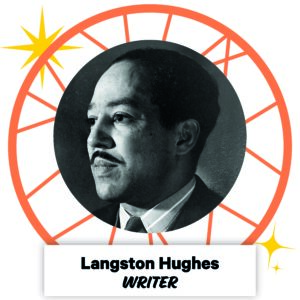 Langston Hughes was one of the most famous writers of the Harlem Renaissance, a time when African American culture blossomed in the 1920s. Born in 1901, Hughes was a poet, playwright, and social activist who used his writing to tell the stories of Black people. He was one of the first to use jazz music as inspiration for poetry, creating a style called jazz poetry. Hughes believed in the power of art to bring about social change, and his poems reflected the struggles and dreams of African Americans. He wrote about topics like racism, hope, and pride, and his works became a voice for Black communities. Hughes’ famous works, like his poem The Negro Speaks of Rivers, showed that Black culture had deep roots in history. He also wrote plays, short stories, and novels, and he worked as a journalist. Hughes’ influence continued through the Civil Rights Movement, and today he is known as one of the most important writers in American history.
Langston Hughes was one of the most famous writers of the Harlem Renaissance, a time when African American culture blossomed in the 1920s. Born in 1901, Hughes was a poet, playwright, and social activist who used his writing to tell the stories of Black people. He was one of the first to use jazz music as inspiration for poetry, creating a style called jazz poetry. Hughes believed in the power of art to bring about social change, and his poems reflected the struggles and dreams of African Americans. He wrote about topics like racism, hope, and pride, and his works became a voice for Black communities. Hughes’ famous works, like his poem The Negro Speaks of Rivers, showed that Black culture had deep roots in history. He also wrote plays, short stories, and novels, and he worked as a journalist. Hughes’ influence continued through the Civil Rights Movement, and today he is known as one of the most important writers in American history.
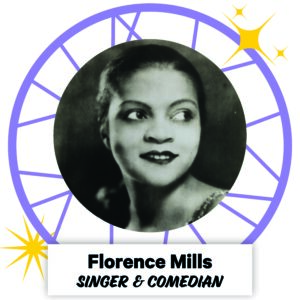 Florence Mills was a star performer who became one of the most famous singers and dancers of the Harlem Renaissance. Born in Washington, D.C., in 1896, Mills began performing at a young age. She first gained attention in vaudeville, a type of variety show, before making her Broadway debut in 1921 in the musical Shuffle Along, which featured an all-Black cast. Mills’ performances were unforgettable—her voice was striking, and her dancing was full of energy. She became a sensation on stage, and soon, she was performing in major theaters in New York and abroad, including in London and Paris. Mills helped break down barriers for African American women in theater, showing the world that Black performers could be stars on the same stage as white performers. Despite her success, she tragically passed away at the young age of 31. However, her legacy lives on as one of the leading figures in African American entertainment during the Jazz Age.
Florence Mills was a star performer who became one of the most famous singers and dancers of the Harlem Renaissance. Born in Washington, D.C., in 1896, Mills began performing at a young age. She first gained attention in vaudeville, a type of variety show, before making her Broadway debut in 1921 in the musical Shuffle Along, which featured an all-Black cast. Mills’ performances were unforgettable—her voice was striking, and her dancing was full of energy. She became a sensation on stage, and soon, she was performing in major theaters in New York and abroad, including in London and Paris. Mills helped break down barriers for African American women in theater, showing the world that Black performers could be stars on the same stage as white performers. Despite her success, she tragically passed away at the young age of 31. However, her legacy lives on as one of the leading figures in African American entertainment during the Jazz Age.
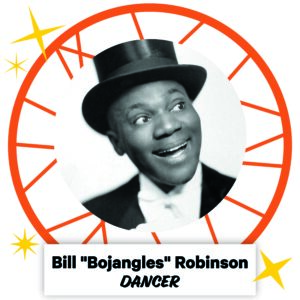 Bill “Bojangles” Robinson was a legendary tap dancer who became one of the most beloved performers in American history. Born in 1878 in Virginia, Robinson grew up in a family that faced many hardships, but he found a passion for dance early on. His breakthrough came when he joined the Broadway show Blackbirds of 1928, where his famous “stair dance” made him a star. Robinson was known for his incredible footwork, which was different from the heavy style of tap dancing that had been common before. Instead, his dancing was light and elegant, inspiring many others to follow his style. In addition to Broadway, Robinson also appeared in several Hollywood films, often dancing alongside famous child star Shirley Temple. While Robinson’s career was filled with success, he still had to face racism and was often cast in stereotypical roles. Nevertheless, he became a trailblazer for Black actors and dancers, showing that talent could break barriers. Later in life, he even helped create a Black baseball team, the New York Black Yankees. Robinson’s contributions to dance and entertainment left a lasting impact on American culture.
Bill “Bojangles” Robinson was a legendary tap dancer who became one of the most beloved performers in American history. Born in 1878 in Virginia, Robinson grew up in a family that faced many hardships, but he found a passion for dance early on. His breakthrough came when he joined the Broadway show Blackbirds of 1928, where his famous “stair dance” made him a star. Robinson was known for his incredible footwork, which was different from the heavy style of tap dancing that had been common before. Instead, his dancing was light and elegant, inspiring many others to follow his style. In addition to Broadway, Robinson also appeared in several Hollywood films, often dancing alongside famous child star Shirley Temple. While Robinson’s career was filled with success, he still had to face racism and was often cast in stereotypical roles. Nevertheless, he became a trailblazer for Black actors and dancers, showing that talent could break barriers. Later in life, he even helped create a Black baseball team, the New York Black Yankees. Robinson’s contributions to dance and entertainment left a lasting impact on American culture.
- “Adam Clayton Powell Jr.” Encyclopedia.com.
- “Adam Clayton Powell, Jr.” Britannica, Civil Rights Activist, Harlem Congressman.
- “Eubie Blake (1883-1983).” Evamere Entertainment.
- “Zora Neale Hurston.” Britannica.
- “Zora Neale Hurston | Biography, Books, Short Stories, & Facts.” Britannica.
- “Patricia Bath: Biography, Doctor, Inventor.” Biography.
- “Malcolm X.” Britannica, Biography, Nation of Islam, Assassination, & Facts.
- “Malcolm X – Kids.” Britannica Kids | Homework Help.
- MalcolmX.pdf.
- “Harlem Renaissance.” Wikipedia.
- “Harlem Renaissance: Definition, Artists & How It Started.” HISTORY.
- “A New African American Identity: The Harlem Renaissance.” National Museum of African American History and Culture.
- “Florence Mills (1896-1927).” Evamere Entertainment.
- “Florence Mills – Songs, Death & Career.” Biography.
- “Bill ‘Bojangles’ Robinson – Facts, Quotes & Dancing.” Biography.
- “Bill ‘Bojangles’ Robinson (1878-1949).” Evamere Entertainment.
- Schomburg Center for Research in Black Culture, Photographs and Prints Division, The New York Public Library. (1935 – 1939). Harlem Tenement in Summer Retrieved from https://digitalcollections.nypl.org/items/81f397c0-461d-0134-90b2-00505686a51c
A Word From Our Designers
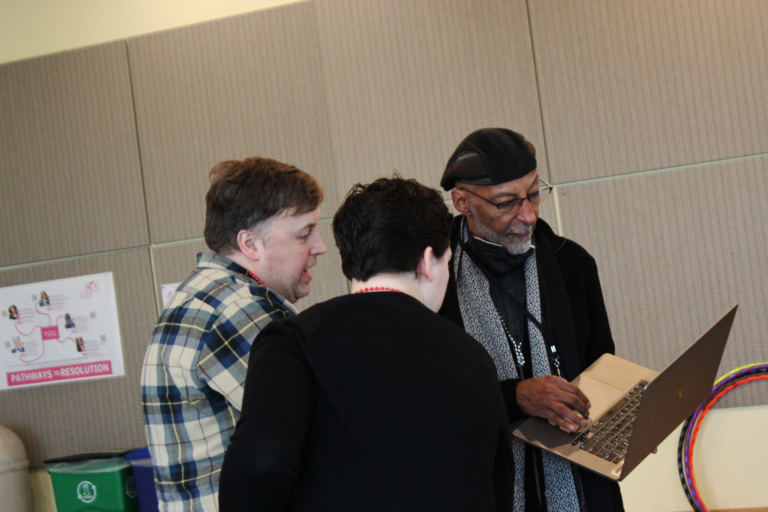
Lighting the Story
With Light Designer Darren McCroom
Lighting designer Darren McCroom brings the vibrant streets of Harlem to life with warm yellows, soft oranges, and playful blues. His design reflects the energy, competition, and community spirit of the story. Natural daylight tones recreate sunny street scenes, while magical effects like twinkling lights and patterns create whimsical moments. Focused spotlights and dynamic colors light up the hula-hoop competitions—Darren’s favorite part, especially the glowing light-up hula-hoops! Through thoughtful transitions and a mix of vibrant and softer tones, Darren’s lighting captures the joy of childhood, the excitement of competition, and the warmth of family.
Can you spot the sun moving across the stage as the day turns into afternoon?
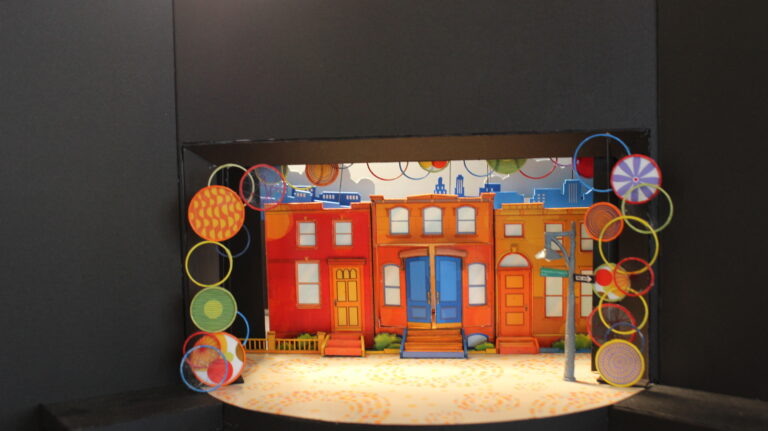
Bringing Harlem to Life
With Scenic Designer Parmida Ziaei
Scenic designer Parmida Ziaei brings the dynamic energy of Harlem to life with a set and prop design that is rich with colorful patterns, playful shapes, and plenty of hoops! Inspired by the 2D hand-drawn illustrations in Vanessa Brantley-Newton’s book, the real-life Harlem neighborhood, and the art of Black artists like Judy Bowman, Parmida’s design feels youthful, imperfect, and full of movement. Her favorite part? The hoops, patterns, and colors that make the set so dynamic and fun! Parmida hopes her design captures the magic of community, joy, and movement and that you’ll feel the fun as soon as you step into the theater.
Keep an eye out for circles hidden all over the set—can you count them?
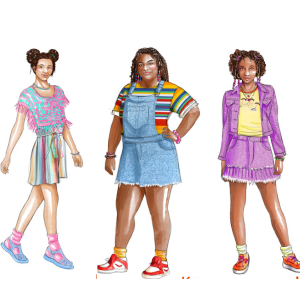
Dressing the Queens
With Costume Designer Danielle Nieves
Costume designer Danielle Nieves creates a colorful, vibrant wardrobe that reflects the joyful, energetic world of Harlem. Inspired by movement, the costumes are designed to allow for maximum "hoop-ography"—glitter, sequins, fringe, and flowing fabrics bring the hula-hoops to life!
The kids’ costumes celebrate the essence of being 10-year-old hula-hoopers, while the adults’ outfits reflect their unique personalities: Miz Adeline’s fashionista flair, Mama’s elegant practicality (think Claire Huxtable!), and Miss Evelyn’s casual, no-nonsense style. With each character changing costumes multiple times, the designs help show the passage of time and bring the story’s community and intergenerational relationships to life.
What do the costumes tell you about the characters?
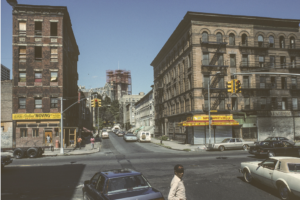
Catching the Beat
With Sound Designer Eliza Vedar
Sound designer Eliza Vedar brings the vibrant energy of Harlem to life with a rhythmic, musical soundscape. Music is one of the play’s primary languages, moving at a lively tempo of 156 beats per minute. The rhythmic sounds of swiggle, swish, and switch from the girls’ hoops blend with their rapping rhymes, while Portia’s flute becomes an extension of her character, orchestrating the sounds of the street.
Inspired by the opening sequence of the film In the Heights and Harlem’s dynamic streets, Eliza layers city sounds—car horns, shop bells, and footsteps—into music, transforming the block into a living, breathing world. Keep an ear out for the repeated sound that signals Kameeka’s “hula-hoopin’ itch” and intensifies with her excitement. And listen closely to the special flute moments - fun fact, they're played by Eliza herself on her childhood instrument! Life on 139th Street moves fast, and the rhythm and sounds keep these characters right on beat.
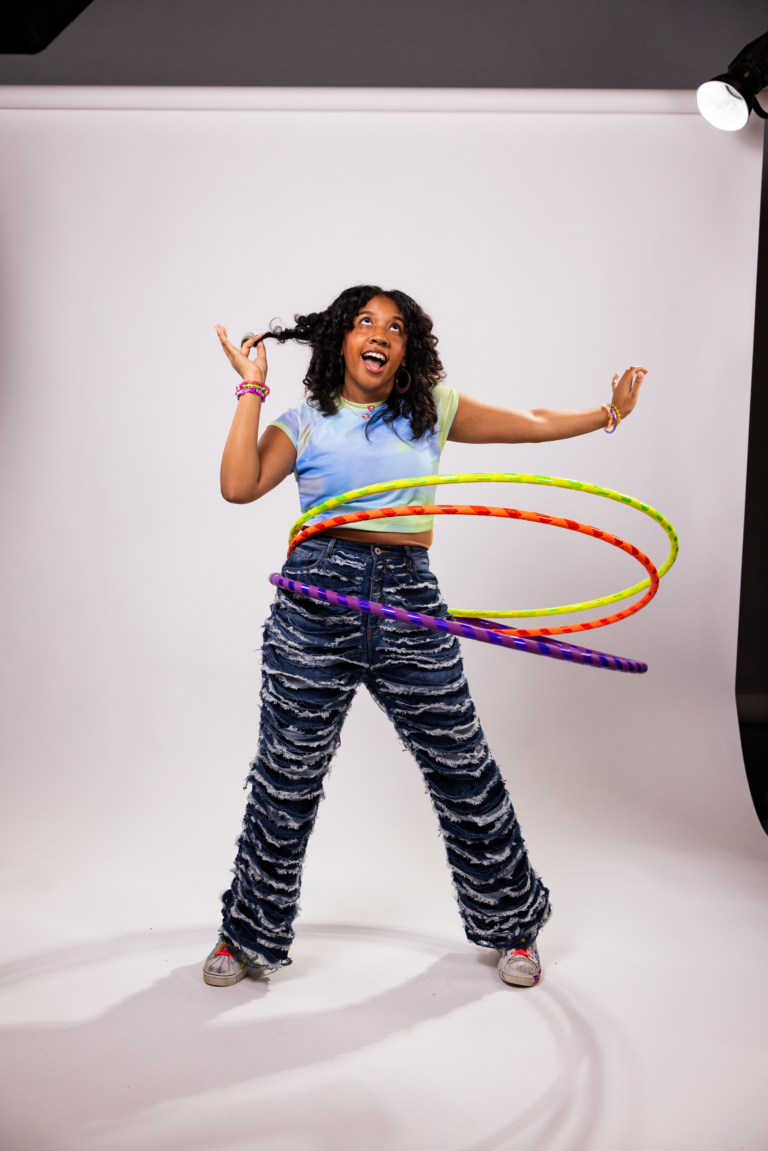
Hoop Dreams
With Choreographer Arlene Smith
For hoop choreographer Arlene Smith, hula hoops are pure joy—and designing the “hoop-ography” for this play has been a dream come true. Watching the actors, who were new to hooping just months ago, master tricks, invent new moves, and reconnect with their inner child has been the most exciting part of the process. Arlene’s choreography celebrates the playful spirit of the story while accentuating the actors’ amazing work.
Inspired by years of hooping and the unique connection between hoopers and their hoops, Arlene’s hoop-ography transforms hoops into more than just toys. Keep an eye out for the characters’ imaginative uses of their hoops—sometimes, a hoop isn’t just a hoop! Arlene hopes this play inspires you to move, groove, and maybe even pick up a hoop yourself. Remember: everyone starts as a beginner, and the most important part of hooping is having fun! If you’re smiling, you’re doing it right.
Step around the corner and try out your tricks!

